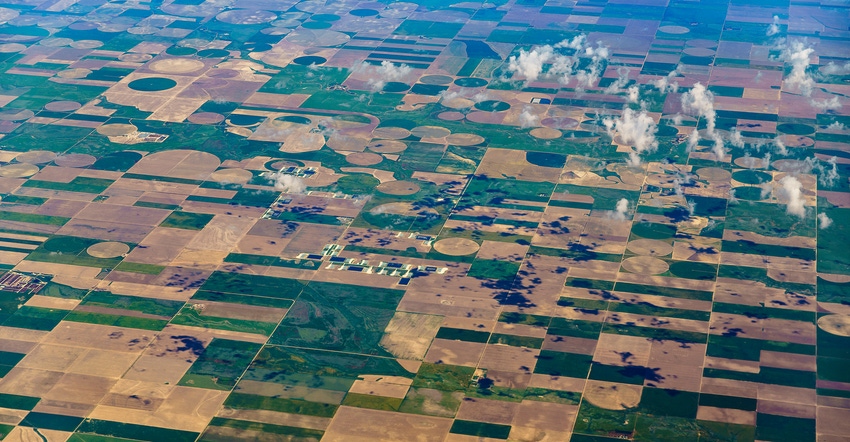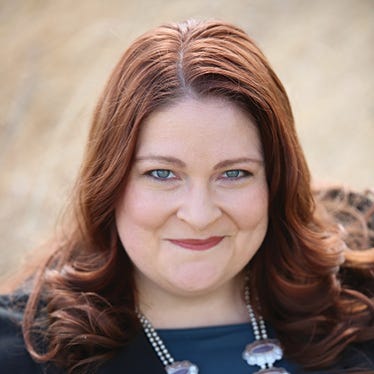
Kansas has a lot to be thankful for, and top of the list is its water resources that are vital to the state’s economy and quality of life.
Kansas water stakeholders and the state’s leading experts came together for the Governor’s Conference on the Future of Water in Kansas. Kansas Gov. Laura Kelly welcomed stakeholders Nov. 17 by reminding them that the state’s future growth is tied to its judicious use of its groundwater and surface water resources. By preparing the state for climate extremes and taking steps to ensure the supply of quality water, we will be looking after the future of our economy as well, she added.
The key takeaways from this year’s lineup of presenters for agricultural stakeholders included:
1. Climate trends. Doug Kluck, central regional climate services director for National Oceanic and Atmospheric Administration, shared that precipitation trends show increases across the state, but that temperatures are trending higher as well. In particular, minimum temperatures — the lows of the day — are increasing more rapidly, signaling that nights are hotter. Kluck added that billion-dollar disasters are increasing in frequency and becoming more costly. As we enter a La Niña year, Kansas has a slightly enhanced chance for warmer-than-normal conditions, he said.
2. Conservation investment. Rob Manes, Kansas state director for The Nature Conservancy, said Kansas has historically underinvested in conservation in the broadest sense. And yet, a poll of Kansans reveals that they value nature, they are more likely to vote for a candidate who supports conservation spending, and that water conservation tops the list. Going forward, there’s conversations to be had about how to fund conservation, he said, whether that’s a portion of existing taxes, using gaming taxes for conservation, or even a slight sales tax increase on sporting goods and outdoor equipment. Manes adds that $50 million to $150 million in annual spending could bridge the gap.
3. Protecting species. Brad Loveless, secretary of the Kansas Department of Wildlife, Parks and Tourism, spoke about the Kansas Aquatic Species Conservation Agreement, which provides safe harbor to landowners with land that might have once boasted protected species. The goal is to make sure lands can be used for grazing as well as species conservation.
4. LEMAs and more. David Barfield, Kansas Water Resources Consulting LLC, said Groundwater Management District (GMD) No. 4 found success with its Sheridan 6 LEMA (local enhanced management area), saving 35% of its groundwater from the Ogallala Aquifer in its first five-year period, 2013-17. It was renewed for 2018-22, and its farmers are still seeing success, Barfield said. It’s in the process to extend that LEMA, he added.
GMD No. 1, which is the most depleted of the GMDs, Barfield said, has been working out how to create a LEMA that would be fair to all. This part of the aquifer has variable rates of productive wells, and there’s quite a lot of irrigated and high-value animal agriculture on top of that ground, Barfield said. The GMD No. 1 board has now decided on a hybrid approach to setting allocations, based on historic water use, but also using a sliding scale to vary the percentage reduction on authorized acres. The plan is slated for hearings in spring 2022; if approved, they could take effect in 2023.
5. Cover crops. Nathan Nelson, professor of soil fertility and nutrient management, Kansas State University, presented research into how cover crops may affect phosphorus runoff from fields. The study found that cover crops slow the intensity of water runoff during rain events, allowing for water to infiltrate. The research also showed that the best management practice of injecting fertilizer can reduce its loss from the field.
6. Drinking water. The Kansas Drinking Water Program is a voluntary, nonregulatory program at the Kansas Department of Health and Environment, with the goal of helping small communities prevent nitrate contamination in their public water supplies, said Logan Smith, the program coordinator. Communities must provide clean water — and if they have water with high nitrate contamination, they must put in a $2 million facility to clean that water, and then spend upward of $1 million a year to maintain that facility, he added. Small communities of 100 to 200 people could never afford that. The KDWP helps communities alleviate their nitrate problems proactively, and works with local stakeholders to create plans that work for the community.
7. DropXL sorghum. Kansas farmers harvested 230 million bushels of sorghum in 2020, which was 64% of the U.S. domestic supply. As part of KDA’s ag growth strategy, Kansas Water Vision and the Kansas Water Research Committee identified sorghum as a crop that could help the state’s farmers preserve and stretch its water resources. Working with the KSU Center for Sorghum Improvement, work has been underway to identify a naturally occurring trait in the sorghum genome that enhances sorghum’s water efficiency. That trait, DropXL, has been found; there are 160 sorghum lines that are being advanced in Mexico, with 375 more sorghum lines expected to be advanced next summer. The goal is to offer DropXL genetic materials to public and private sorghum breeders for inclusion in their lines for commercialization.
About the Author(s)
You May Also Like






